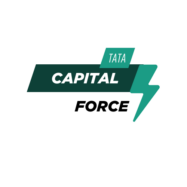Crafting clear and concise business requirements is crucial for the success of any project. Whether you’re developing a new software tool, launching a marketing campaign, or rolling out a new product, understanding and documenting your business needs is the first step toward achieving your goals. This process not only ensures that all stakeholders are on the same page but also helps mitigate risks associated with miscommunication and scope creep.
In the bustling world of business, examples serve as a lifeline, providing clarity and direction. They help teams visualize the end goal and understand the steps needed to get there.
Business Requirements Example
Importance in Project Success
 Business requirements play a crucial role in project success, serving as the foundation for project planning and execution. These requirements outline the goals, objectives, and expected outcomes, making it clear what the project aims to achieve. By providing a detailed blueprint, business requirements ensure all team members understand their roles and the project’s purpose. This understanding helps prevent scope creep, reduces risks of miscommunication, and aligns stakeholder expectations, leading to more successful project outcomes. Additionally, clear business requirements facilitate better resource allocation, allowing project managers to assign tasks and resources more efficiently and effectively.
Business requirements play a crucial role in project success, serving as the foundation for project planning and execution. These requirements outline the goals, objectives, and expected outcomes, making it clear what the project aims to achieve. By providing a detailed blueprint, business requirements ensure all team members understand their roles and the project’s purpose. This understanding helps prevent scope creep, reduces risks of miscommunication, and aligns stakeholder expectations, leading to more successful project outcomes. Additionally, clear business requirements facilitate better resource allocation, allowing project managers to assign tasks and resources more efficiently and effectively.
Common Challenges
Creating effective business requirements poses several challenges that organizations must address. One of the primary issues is the lack of clarity and detail, which can lead to ambiguity and misunderstandings among team members. Ensuring that requirements are specific, measurable, and detailed is essential for preventing this issue. Another common challenge is the dynamic nature of project needs that can evolve during the lifecycle of the project. Adapting to these changes while maintaining the original project goals requires agile and responsive planning. Stakeholder alignment also presents a significant challenge, as differing priorities and visions can complicate the development of a unified set of business requirements. Effective communication and continuous stakeholder engagement are critical to overcoming these challenges and crafting requirements that reflect the collective aims and needs of all parties involved.
Types of Business Requirements
Functional Requirements
 Functional requirements detail the interactions between the system and its environment independent from the implementation. They describe what the system does, capturing the intended behavior of the system. Businesses specify functional requirements to communicate and agree on the specifics of the system inputs, outputs, data, and processes. For instance, a functional requirement for an e-commerce site might state, “The system must allow users to filter products by category,” specifying a clear action the software must support.
Functional requirements detail the interactions between the system and its environment independent from the implementation. They describe what the system does, capturing the intended behavior of the system. Businesses specify functional requirements to communicate and agree on the specifics of the system inputs, outputs, data, and processes. For instance, a functional requirement for an e-commerce site might state, “The system must allow users to filter products by category,” specifying a clear action the software must support.
Non-Functional Requirements
Non-functional requirements, unlike functional requirements, define how a system operates, ensuring the functionality meets certain criteria. These requirements focus on user expectations, as they relate to usability, reliability, performance, and security. For example, a non-functional requirement might declare, “The system must load any page within 2 seconds,” which dictates the performance criteria that can impact user satisfaction and system usability.
Transition Requirements
Transition requirements outline the conditions necessary for transitioning from the current state of a business process or system to a new one. These details help ensure continuity and minimal disruption. Specifically, these requirements might detail training needs for staff, data migration processes, and other change management activities that facilitate a smooth transition. For instance, a transition requirement could include, “All current sales data must be migrated to the new system without data loss,” thus ensuring integrity and continuity of business operations.
Crafting Effective Business Requirements
 Crafting effective business requirements necessitates precise documentation and clear communication. Teams must ensure these requirements are detailed, align with project goals, and resonate with all stakeholders involved. These criteria not only prevent scope creep but also facilitate seamless transitions and system operations.
Crafting effective business requirements necessitates precise documentation and clear communication. Teams must ensure these requirements are detailed, align with project goals, and resonate with all stakeholders involved. These criteria not only prevent scope creep but also facilitate seamless transitions and system operations.
- Detail Each Requirement – Effective requirements specify the expectations, using language that leaves no room for ambiguity. For example, in software development, functional requirements might specify actions like, “The system must export data in CSV format.”
- Align Requirements with Objectives – Requirements must directly support the business objectives. For instance, if the objective is to enhance customer satisfaction, a requirement could state, “The system shall reduce customer service response time by 30%.”
- Engage Stakeholders Regularly – Continuous engagement with stakeholders ensures that requirements evolve with the project’s needs and stakeholders’ expectations. Meetings and updates provide platforms for feedback and adjustment.



